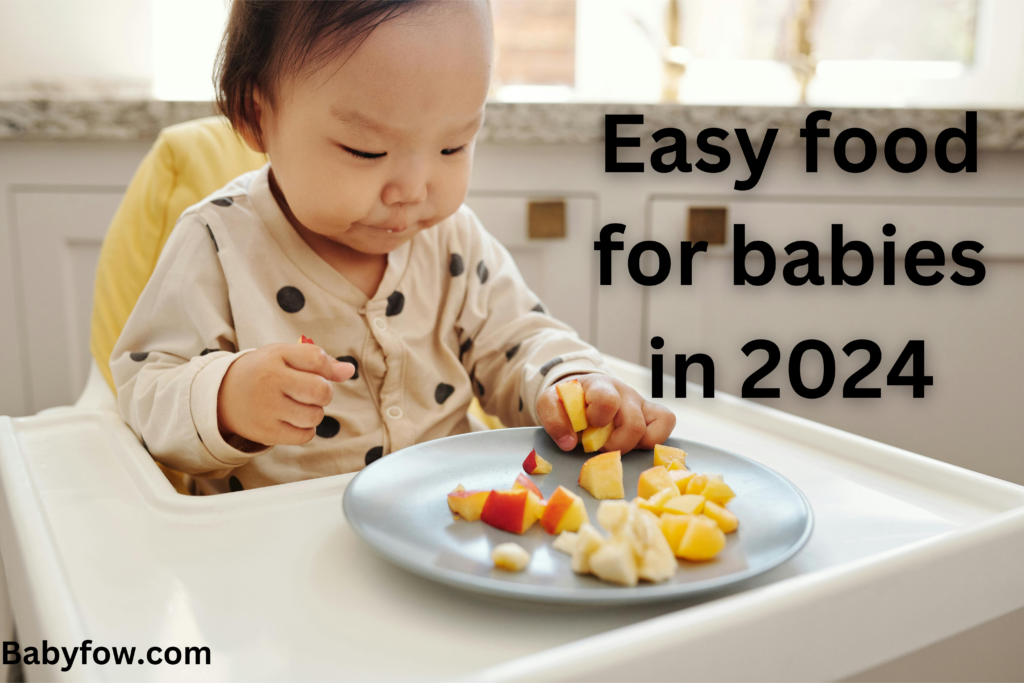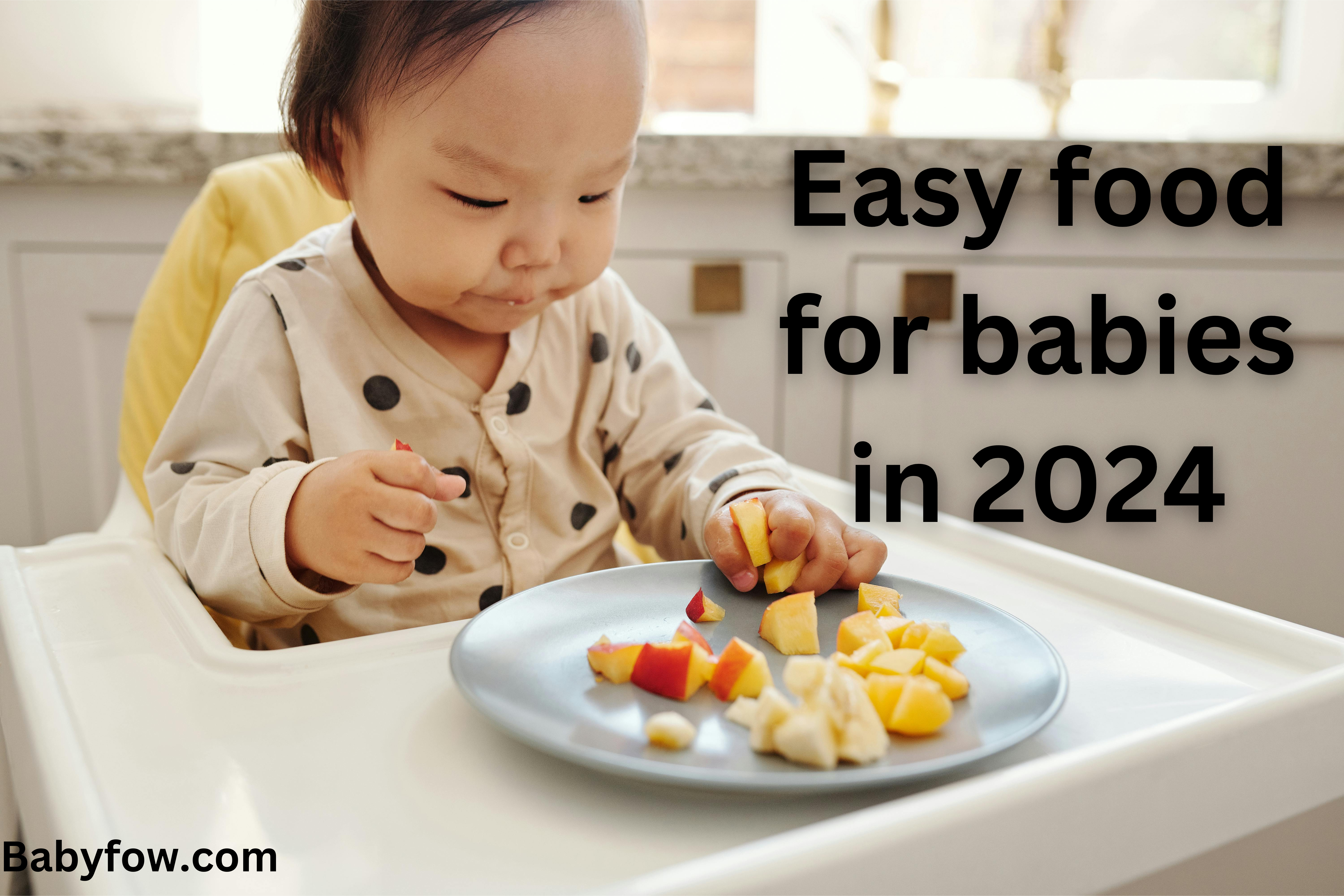Nutritious and Delightful Homemade Baby Food Recipes
The Benefits of Homemade Baby Food
As a parent, one of the most exciting (and messy!) milestones is introducing solid foods to your precious baby. It’s a journey filled with adorable faces, funny noises, and lots of spills! But don’t worry, we’ve got you covered with some simple tips and delicious recipes to make mealtime a breeze.
You might be thinking, “Why bother making homemade baby food when there are so many convenient store-bought options?” Well, let me tell you – homemade is the way to go! Not only does it ensure you know exactly what’s going into your little one’s tummy, but it also saves you money in the long run.
Plus, it’s incredibly satisfying to watch your baby devour a meal you’ve lovingly prepared. Trust me, those bright eyes and happy giggles make all the effort worthwhile.
Getting Started: Essential Tips
Before we dive into the recipes, let’s go over a few helpful tips to make your baby food adventure a little smoother:
| Tip | Description |
|---|---|
| Invest in the Right Tools | A good blender or food processor is a must-have for pureeing those nutritious meals. You’ll also want some baby food storage containers to keep those batches fresh. |
| Stock Up on Basics | Keep your pantry stocked with staples like sweet potatoes, carrots, apples, and your baby’s favorite proteins (more on that later!). |
| Start Simple | Begin with single-ingredient purees, and then gradually introduce new flavors and combinations as your baby becomes more adventurous. |
| Embrace the Mess | Babies are messy eaters, and that’s perfectly okay! Embrace the chaos, keep plenty of bibs and wipes on hand, and remember – it’s all part of the fun! |

Now, let’s get cooking!
Veggie Delights for Growing Babies
Vegetables are an excellent source of essential vitamins and minerals for your growing baby. Here are some crowd-pleasers to try:
Sweet Potato Puree
Ingredients:
- 2 medium sweet potatoes
- Water or breast milk/formula (for thinning)
Instructions:
- Peel and chop the sweet potatoes into small cubes.
- Place the cubes in a steamer basket and steam until fork-tender, about 15-20 minutes.
- Transfer the steamed sweet potatoes to a blender or food processor.
- Add a few tablespoons of water or breast milk/formula and puree until smooth, adding more liquid as needed to reach the desired consistency.
- Let the puree cool before serving.
Pro Tip: For extra creaminess, you can add a dollop of unsweetened applesauce or a touch of cinnamon!
Broccoli and Pear Puree
Ingredients:
- 1 cup broccoli florets
- 1 ripe pear, peeled and chopped
- Water or breast milk/formula (as needed)
Instructions:
- Steam the broccoli florets until tender, about 8-10 minutes.
- In a blender or food processor, combine the steamed broccoli, chopped pear, and a few tablespoons of liquid.
- Puree until smooth, adding more liquid as needed for the desired consistency.
- Let the puree cool before serving.
Funny Fact: Pears are known as the “baby food fruit” because of their natural sweetness and smooth texture – perfect for little taste buds!
READ MORE :
Fruity Favorites for Delightful Flavors
Fruits are not only deliciously sweet, but they’re also packed with essential vitamins and fiber. Here are a couple of fruity picks your baby is sure to love:
Banana and Blueberry Puree
Ingredients:
- 1 ripe banana
- 1/2 cup fresh or frozen blueberries
- Breast milk, formula, or water (for thinning)
Instructions:
- Peel and mash the banana in a bowl with a fork or potato masher.
- Add the blueberries and a few tablespoons of liquid.
- Use an immersion blender or transfer to a regular blender and puree until smooth, adding more liquid as needed for the desired consistency.
- Let the puree cool before serving.
Did You Know? Blueberries are packed with antioxidants, which help support your baby’s developing brain and immune system. Plus, their vibrant color makes for an adorable purple-stained smile!
Mango and Avocado Puree
Ingredients:
- 1 ripe mango, peeled and diced
- 1/2 ripe avocado, pitted and diced
- Breast milk, formula, or water (for thinning)
Instructions:
- In a blender or food processor, combine the diced mango and avocado.
- Add a few tablespoons of liquid and puree until smooth, adding more liquid as needed for the desired consistency.
- Let the puree cool before serving.
Fun Fact: Avocados are an excellent source of healthy fats, which are essential for your baby’s brain development and overall growth.
Protein Power for Strong Muscles
While fruits and veggies are great, your baby also needs protein for strong muscles and overall development. Here are some tasty protein-packed options:
Chicken and Apple Puree
Ingredients:
- 1 boneless, skinless chicken breast (cooked and shredded)
- 1 apple, peeled and chopped
- Water or chicken broth (as needed)
Instructions:
- In a blender or food processor, combine the shredded chicken, chopped apple, and a few tablespoons of liquid.
- Puree until smooth, adding more liquid as needed for the desired consistency.
- Let the puree cool before serving.
Parenting Hack: Make a big batch of this puree and freeze it in ice cube trays for quick and easy meals on busy days!
Lentil and Carrot Puree
Ingredients:
- 1 cup cooked lentils
- 1 cup chopped carrots
- Water or vegetable broth (for thinning)
Instructions:
- Steam the chopped carrots until tender, about 10-12 minutes.
- In a blender or food processor, combine the cooked lentils, steamed carrots, and a few tablespoons of liquid.
- Puree until smooth, adding more liquid as needed for the desired consistency.
- Let the puree cool before serving.
Did You Know? Lentils are an excellent source of plant-based protein, fiber, and iron – a real superfood for your growing baby!

Mixing and Matching Flavors
Once your baby has tried a variety of single-ingredient purees, it’s time to start mixing and matching flavors! This not only introduces new tastes and textures but also helps ensure your little one gets a well-rounded diet.
| Flavor Combinations |
|---|
| Sweet Potato + Pear + Cinnamon |
| Broccoli + Cauliflower + Garlic |
| Blueberry + Banana + Greek Yogurt |
| Mango + Spinach + Avocado |
| Chicken + Sweet Potato + Rosemary |
| Lentil + Carrot + Cumin |
The possibilities are endless, so feel free to get creative and experiment with your baby’s favorite flavors!
Feeding Time Tips for Happy Mealtimes
Now that you’ve got a collection of delicious purees, here are a few feeding time tips to make the experience even smoother:
| Tip | Description |
|---|---|
| Introduce New Foods Gradually | Try one new food at a time, waiting a few days before introducing another. This helps identify any potential allergies or sensitivities. |
| Offer a Variety | Don’t get stuck in a rut! Offer a variety of flavors, textures, and colors to keep your baby interested and exposed to different nutrients. |
| Make it Fun | Sing songs, make silly faces, and enjoy the bonding experience that mealtime can bring! |
Baby Food Storage Guidelines
Proper storage is key to ensuring your easy baby food stays fresh and safe to consume. Follow these guidelines:
Refrigerator Storage
| Food Type | Fridge Storage Time |
|---|---|
| Fruit Purees | 2-3 days |
| Vegetable Purees | 2-3 days |
| Meat/Poultry Purees | 1-2 days |
| Combination Purees | 1-2 days |
- Allow purees to cool completely before transferring to airtight containers or jars with tight-fitting lids.
- Refrigerate immediately after cooking and use within the recommended timeframe.
- Always check for signs of spoilage (odor, discoloration, or mold) before serving.
Freezer Storage
Frozen baby food can last for several months, making it a convenient option for batch cooking.
| Step | Instructions |
|---|---|
| Portion it out | Spoon cooled purees into ice cube trays, small jars or containers, leaving room for expansion. |
| Label and date | Clearly label each container with the contents and date made. |
| Freeze quickly | Place containers or trays in the freezer immediately to freeze rapidly. |
| Store properly | Once frozen solid, transfer cubes or portions to freezer-safe bags or containers for up to 3-6 months. |
Pro Tip: When reheating frozen baby food, always thaw it in the refrigerator overnight before warming gently. Never refreeze previously thawed portions.
Introducing New Flavors and Textures
As your baby grows, their taste buds and appetite will evolve too! Around 6-8 months, you can start experimenting with new flavors and textures beyond smooth purees.
| Flavor Exploration |
|---|
| Herbs and Spices |
| Citrus |
| Nut Butters |
| Texture Progression |
|---|
| Mashed Foods |
| Finger Foods |
Remember to introduce new textures gradually and always supervise your baby during meals to ensure safe eating habits.
Here’s the FAQ section presented in a table format:
| Frequently Asked Questions | Answers |
|---|---|
| How do I know if my baby is ready for solid foods? | Most babies can start solid foods around 6 months of age. Look for signs such as sitting upright, good head and neck control, moving food from front to back of mouth, and showing interest in foods. |
| Can I make baby food in bulk and freeze it? | Absolutely! Making large batches of purees and freezing them in portions is a huge time-saver. See the freezer storage tips above for the proper way to freeze and thaw homemade baby food. |
| Is it safe to give my baby eggs, fish, or nuts? | Current guidelines recommend introducing potentially allergenic foods like eggs, fish, and nuts early once your baby starts solids. This may help prevent food allergies. Always introduce one new food at a time and watch carefully for any reactions. |
| How long should I stick to purees before moving to chunkier textures? | Every baby progresses at their own pace. Generally, babies get the hang of smooth purees around 6 months, can move to thicker textures with soft lumps around 7-8 months, and can try finely chopped pieces around 9-12 months. Follow your baby’s cues. |
| Should I buy organic ingredients for homemade baby food? | Organic produce can reduce your baby’s exposure to pesticides, but it is not a requirement. Focus on thoroughly washing and peeling any non-organic produce. |
Conclusion
Feeding your baby homemade food is a wonderful way to ensure they get the best nutrition while also creating special memories together. With these easy and nutritious baby food recipes, you can provide a variety of delicious meals that support your baby’s growth and development.
Happy cooking and happy feeding!









Pingback: Cognitive Development In Infants And Toddlers. - Babyfow.com